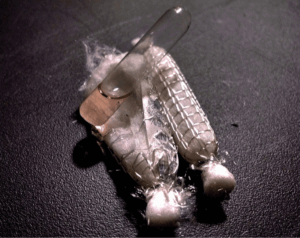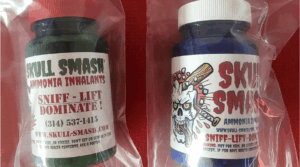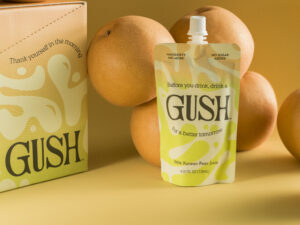There’s a peculiar sight you’ll see more and more in weight rooms, locker rooms, and livestreams these days: the cracking of a what looks like a supplement bottle, a deep inhale, and then the explosive reaction – somewhere between a primal roar and a nose-on-fire grimace. Welcome to the newly invigorated era of smelling salts, the once-obscure stimulant making a mainstream comeback thanks to the internet, gym culture, and a whole lot of bro-science.
From PR attempts to prank videos, from serious athletes to podcast hosts getting blasted for a goof, smelling salts are having a bit of a viral moment. But beneath the hype lies a story with roots in ancient medicine, questionable safety, and a supply chain now dominated by white-label Amazon products.
Let’s break down what they are, why they’re booming, and whether they belong in your gym bag or your trash can.
What Exactly Are Smelling Salts?
Smelling salts aren’t actually “salts” in the way you think of table salt. They’re usually made from ammonium carbonate, which releases ammonia gas when exposed to air or moisture. When you inhale that pungent gas, it irritates the mucous membranes of your nose and lungs, triggering an immediate inhalation reflex. That surge of breath floods the body with oxygen and cues the sympathetic nervous system – the “fight or flight” branch of your physiology.
In other words, they momentarily shock your system into high alert.
Manufacturers sometimes include water, alcohol, or essential oils to regulate the release or add a scent. The result is a jarring cocktail that slaps your consciousness and boosts focus for a few intense seconds.
A Brief History: From Ancient Rome to Barbell Clubs
Smelling salts aren’t a new invention. Use of ammonia traces back to ancient Rome, where early healers used ammonia derived from animal urine to revive the unconscious. In the 13th century, alchemists experimented with ammonium-based compounds, but it wasn’t until the 18th and 19th centuries that smelling salts became a staple in Victorian-era medicine chests.
They were used to awaken fainting women (often thanks to tightly laced corsets), exhausted workers, and soldiers on the brink of collapse. Fast-forward to the 20th century, and smelling salts were found ringside in boxing matches and sidelines in football – anywhere someone might be dazed, groggy, or knocked out.
But as medical knowledge advanced, the practice was largely phased out in professional sports. Today, modern concussion protocols prohibit the use of smelling salts as a revival tool, since masking symptoms with stimulation can be dangerous.
Why People Are Using Them Now
Despite being pushed out of most pro sports, smelling salts have found a cult following among strength athletes. In powerlifting, strongman, and CrossFit circles, they’re a pretty common pre-lift ritual – a legal, fast-acting stimulant to prep for a max-effort squat, deadlift, bench, etc.
The logic is simple: if you can create an intense enough jolt, you can temporarily override fear, hesitation, or fatigue. That adrenaline bump can lead to improved neuromuscular activation, more aggression under the bar, and sometimes a few more pounds lifted.
But it’s not just elite athletes anymore. Thanks to TikTok, YouTube, and Instagram reels, this once-insider trick has become a pretty viral stunt. Teens in commercial gyms and influencers behind microphones are turning ammonia into content.
From Gym Aid to Internet Gimmick
Smelling salts now show up in podcast episodes and prank videos as a test of toughness – or absurdity. Podcast hosts sniff them mid-conversation for laughs and viral reactions. YouTube stars dare each other to use “ultra-strength” varieties. TikTok teens sneak them into unsuspecting friends’ noses. What used to be an elite training tool is now a meme, a dare, a spectacle.
This shift from performance to performance art has widened the market but also increased the risk of misuse. There’s a difference between using smelling salts before a 600-lb deadlift and handing them to your friend during a lunch break.
The Physiology Behind the Buzz
What actually happens when you sniff smelling salts?
- Nasal Irritation: Ammonia irritates the nasal passages, triggering the trigeminal nerve.
- Inhalation Reflex: Your body instinctively draws in air, fast and deep.
- Adrenal Response: This activates the hypothalamic-pituitary-adrenal (HPA) axis, flooding your body with cortisol and adrenaline.
- Increased Heart Rate and Alertness: You feel sharper, more aggressive, more “awake.”

But this is a temporary response. After 30–60 seconds, your body normalizes. And if used too frequently, this type of stimulation could blunt your natural adrenaline response, much like caffeine desensitization.
Are They Safe? A Conditional Yes
Used occasionally and correctly, smelling salts aren’t inherently dangerous. But there are caveats:
- Overuse Risks: Chronic exposure to ammonia can irritate or damage the respiratory tract. Some report nosebleeds or a lingering burning sensation.
- Pre-existing Conditions: Anyone with asthma, sinus issues, or respiratory sensitivity should steer clear.
- Masking Fatigue: Using salts to push through exhaustion can lead to injury or overtraining.
- Accidental Contact: If the liquid or gas gets in your eyes or mouth, it can cause pain or even chemical burns.
According to the National Capital Poison Center, occasional use is unlikely to be toxic, but they do not recommend regular use, especially by minors or those with lung conditions.
The Amazon Gold Rush: Cheap, Rebranded, and Unregulated
With demand soaring, the smelling salts market has turned into a gold rush of white-labeled products, particularly on Amazon. Many of these are sourced from low-cost manufacturers in China, then slapped with edgy labels like:
- “Wake The F Up”
- “Atomic Rage”
- “Dark Side”

Behind the scenes, these products are often identical or nearly so, just repackaged for clout. Some use unstable ammonia solutions, leading to variability in potency. Others contain undisclosed ingredients, broken seals, or misleading marketing (“natural focus enhancer!”).
And since they’re not regulated as food, supplements, or medication, there’s little oversight. No dosage guidelines. No manufacturing standards. No safety checks. Just a market racing to capture the next viral moment.
The Psychological Side: Hype vs. Necessity
While we’re on the topic, it’s worth asking: Do you really need smelling salts to lift heavy?
For many lifters, the ritual becomes a placebo-fueled hype switch. The smell, the intensity, the sheer ridiculousness – it all reinforces a mindset of aggression and readiness. But this dependency can be a trap. Needing to sniff chemicals to feel capable of performing can undermine long-term athletic autonomy.
Real strength isn’t just physical – it’s mental. And if your focus or motivation hinges on a bottle of ammonia, you may be trading control for theatrics.
Smelling Salts Alternatives
If you’re looking for pre-lift activation without chemical warfare, try:
- Powerful breathwork (like Wim Hof-style cycles)
- Slapping the back/traps (a classic strongman technique)
- Smelling essential oils (peppermint and eucalyptus can offer milder alertness)
- Music and visualization
- Progressive warmups with nervous system priming
These methods may not be as intense, but they build resilience without the crash or the chemical exposure.
Final Verdict: Trend or Tool?
Smelling salts aren’t objectively bad. When used sparingly by experienced athletes, they can offer a short-term edge. But the current trend – part gym hack, part social media dare – is mostly more absurdity from the internet world. What started as a sharp tool for peak lifts is sliding towards a blunt weapon of internet content.
they can offer a short-term edge. But the current trend – part gym hack, part social media dare – is mostly more absurdity from the internet world. What started as a sharp tool for peak lifts is sliding towards a blunt weapon of internet content.
Before you crack a capsule, ask yourself why. Is it for focus? Is it for laughs? Is it for the clip?
Smelling salts may be having their moment, but real performances still, and always will, come from within.








